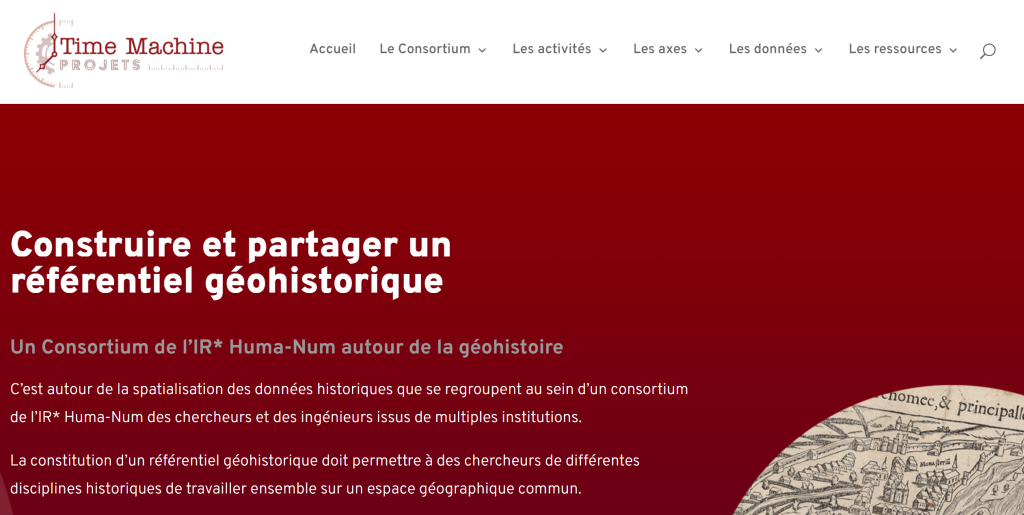The GEO webmapping platform of the Paris Time Machine consortium, initially set up within the framework of the ANR Alpage programme and then taken over within the framework of the transversal programme ArcheoFab – Paris Basin of the UMR 7041 Archéologies et Sciences de l’Antiquité (ArScAn), constitutes a key tool of the PTM consortium.
Our platform integrates a WebSIG infrastructure hosted by the TGIR Huma-Num and based on various applications (DynMap, formerly and currently GEO) acquired and maintained on its servers by the TGIR. This transactional webmapping system, respecting open geographic information standards (OGC, INSPIRE), allows all the actors of the consortium who wish to do so to have at their disposal both a catalogue of spatio-temporal data on the Parisian space in the long term (more than 100 data layers covering a chronological period from the most ancient periods to the present) and to have a self-managed space to manage and develop the resources and spatial data of their project. The data access interfaces, HTML 5 and responsive design, are built on demand and integrate advanced geoprocessing functions for data analysis, visualisation and editing. The back office allows for the coordinated management and administration of data warehouses (MYSQL, POSTGRE, ORACLE) that can be mobilised according to needs and allow for the generation of data flows that comply with the major standards (WMS, WFS, WMTS, TMS, etc.).
This system, which has already been implemented for numerous projects, notably the ANR Alpage programme (Alpage: diachronic analysis of the Parisian space) and the European Rurland programme, is a tool for disseminating thematic maps and georeferenced old maps and plans, which can now be shared and reused for other projects. Currently, more than twenty projects have been carried out on the GEO platform, going well beyond the Parisian circle. While respecting the autonomy of each associated project, this service offer makes it possible to standardise data ad minima to constitute an interoperable and shareable set of reference systems and spatial information in Inspire format and to encourage good practices while allowing research projects to have a flexible and powerful tool for processing spatio-temporal information.

